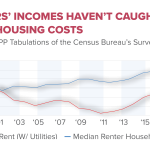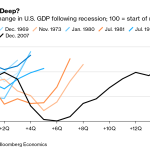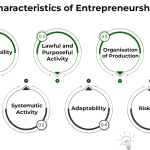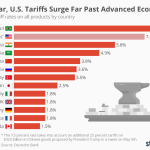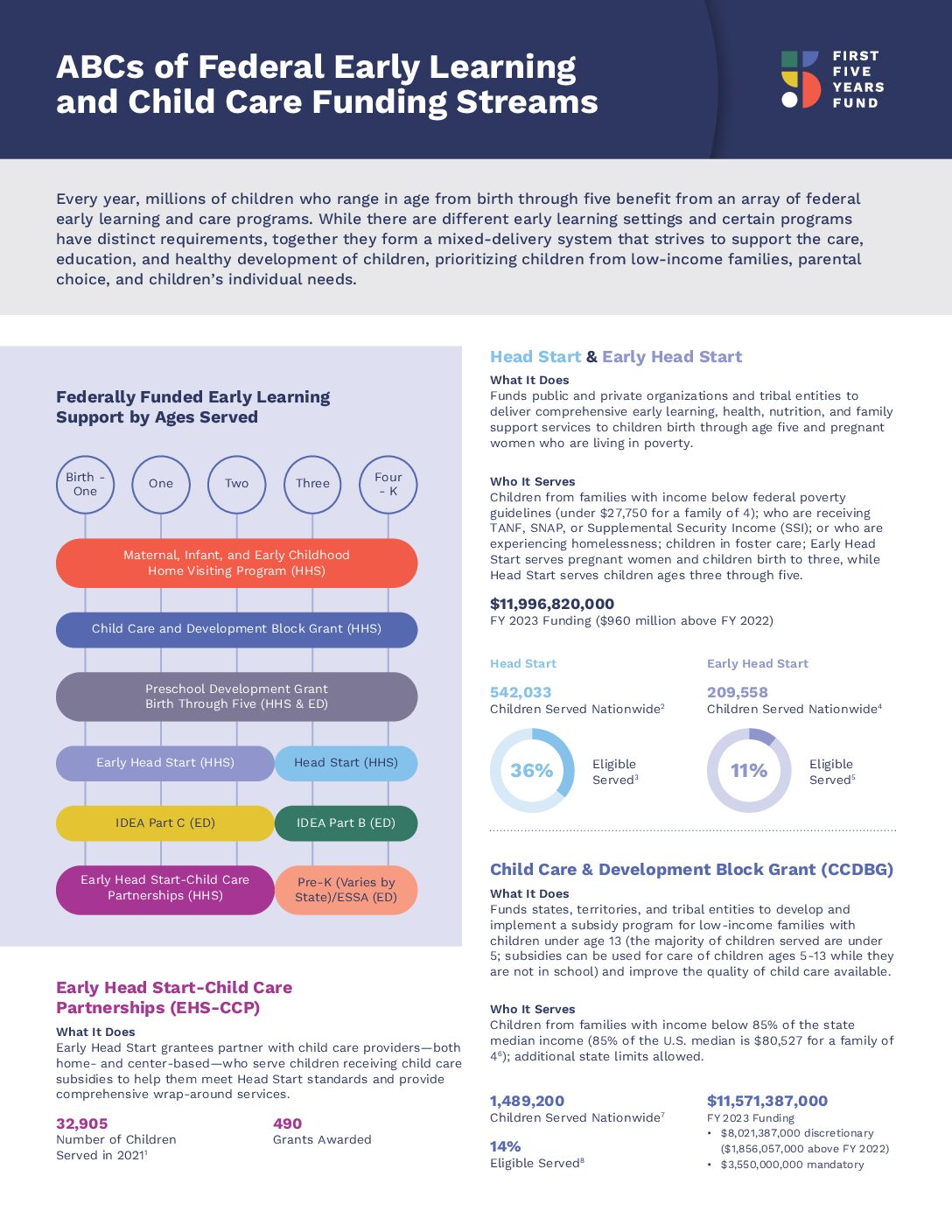Federally funded childcare serves as a crucial lifeline for working mothers, offering essential support that enables them to balance career ambitions with family responsibilities. Amidst ongoing debates about gender equity in the workplace, recent research by Nobel Prize-winning economist Claudia Goldin sheds light on the transformative potential of such initiatives. Through her study of the Lanham Act, a pivotal World War II-era legislation designed to provide childcare benefits, Goldin highlights both the historical significance and contemporary relevance of accessible childcare services. By funding nurseries and extended care programs, the Lanham Act not only facilitated women’s participation in the labor force but also reinforced the economic impact of childcare on communities. As we advocate for enhanced social support systems, the lessons from this legislative framework remind us of the potentially profound effects that federally funded childcare can have on families and the economy.
When discussing government-supported early childhood education options, the term ‘publicly funded childcare’ often comes to mind, representing systems structured to assist parents in securing reliable care for their young children. This concept is especially relevant for mothers entering or remaining in the workforce, as it directly addresses the challenges they face in balancing employment with their caregiving duties. Historical analysis of childcare initiatives, such as those established under the Lanham Act during World War II, reveals significant insights into how such support systems can enhance women’s economic participation. Moreover, understanding the link between childcare availability and workforce dynamics can provide a roadmap for policymakers to create more effective childcare benefits. In essence, exploring the interplay of child development resources and economic resilience highlights the importance of robust childcare funding in nurturing a thriving society.
The Importance of Federally Funded Childcare in Supporting Working Mothers
Federally funded childcare programs play a crucial role in supporting working mothers, particularly in today’s fast-paced economy. As women endeavor to balance their professional responsibilities with family obligations, access to affordable and high-quality childcare becomes paramount. Research shows that when childcare services are subsidized by the government, mothers not only return to the workforce more quickly after childbirth but also pursue higher-paying jobs. This economic empowerment is vital in achieving gender equity, as it allows women to contribute more significantly to the economy while fostering their children’s development.
Moreover, federally funded childcare is essential in breaking down barriers for working mothers across various socio-economic backgrounds. Programs like the Lanham Act demonstrate that when legislative measures are enforced to assist families with childcare needs, they can significantly improve employment rates among women who otherwise might stay at home due to the high costs of childcare. By establishing national programs with comprehensive support, the long-term economic impact of such policies includes increased labor force participation among women, thus preventing the loss of valuable talent and investment in human capital.
Lessons from the Lanham Act: Historical Insights on Childcare Benefits
The Lanham Act of the 1940s stands as a historical landmark in the effort to provide childcare benefits to working mothers. Conceived during World War II, this legislation aimed to mobilize the workforce by funding nurseries for the children of employed mothers, something that was previously thought implausible. Claudia Goldin’s research showcases how these programs were not only about immediate wartime labor needs but also about acknowledging the role of women in the economy. By providing resources to working mothers, the act allowed families to thrive while ensuring that production lines remained full during critical wartime efforts.
Decades later, the lessons learned from the Lanham Act still resonate in contemporary discussions about childcare policies. Goldin’s findings indicate that when women are provided adequate childcare support, the entire economy benefits from the increased participation of mothers in the workforce. Such insights highlight the importance of investing in childcare solutions as a means to foster economic growth and resilience, especially in times of crisis. By looking back at historical precedents, policymakers can glean insights that could inform modern childcare strategies that align with women’s increasing roles in the workforce.
The Economic Impact of Childcare on Women’s Workforce Participation
Studies show that the economic impact of childcare extends far beyond individual families—when mothers have access to quality childcare, they are more likely to enter and remain in the workforce, positively affecting overall employment rates. Economists like Claudia Goldin emphasize that this trend not only helps stabilize family income but also contributes significantly to economic growth at a national level. The increased participation of women in the workforce enhances productivity and innovation, as women bring diverse skills and perspectives to various sectors.
Moreover, the importance of accessible childcare services cannot be overstated when evaluating economic models that prioritize family-friendly policies. These childcare benefits directly correlate to increased earning potential for families, leading to improved livelihoods and reduced poverty rates. By understanding the intricate relationship between childcare access and economic outcomes, advocates can push for stronger policies that support working mothers and, in turn, stimulate broader economic growth.
Redefining Gender Equity: The Role of Childcare in Modern Economies
As society continues to evolve, redefining gender equity remains a critical objective within modern economies. Comprehensive childcare programs offer a pathway to achieving this goal by alleviating the disproportionate burden of caregiving that often falls on women. With policies that prioritize childcare access, working mothers can engage more fully in their careers without the anxiety of finding reliable care for their children. This shift is essential in promoting a more equitable workplace where opportunities are not dictated by gender roles.
Additionally, research indicates that failing to support working mothers through accessible childcare services can perpetuate cycles of inequality. Goldin’s exploration of the Lanham Act highlights how historical backing of childcare for working mothers facilitated their contributions to the economy. By establishing contemporary policies that reflect these lessons, we can dismantle the barriers that have long inhibited women from fully participating in the workforce, ensuring that future generations benefit from a more balanced and equitable professional landscape.
Childcare Initiatives: A Catalyst for Economic Recovery
Recent economic downturns have underscored the critical need for childcare initiatives as a means of recovery. Research has consistently demonstrated that when families are supported through accessible childcare, economic resilience is significantly bolstered. Policymakers must recognize that investing in childcare is not merely an expenditure but rather a strategic investment in the workforce and overall economic health. As Claudia Goldin noted in her analysis, historical evidence shows that enabling women to work by providing childcare can lead to immediate and lasting benefits for the economy as a whole.
Furthermore, effective childcare initiatives can stimulate job creation across the sector. With an increased demand for services, such as early childhood education and afterschool programs, this burgeoning industry not only provides care for children but also creates new employment opportunities for caregivers, educators, and support staff. Thus, robust childcare policies can serve as a catalytic force in stimulating the economy while simultaneously addressing the needs of working families.
Childcare Access: Bridging the Gap for Low-Income Families
A significant challenge within the discourse on childcare is the accessibility of these services for low-income families. Although federally funded childcare initiatives like Head Start aim to support disadvantaged children, many working mothers still struggle to find affordable care that allows them to hold down jobs. The research by Claudia Goldin illustrates the disparities that existed even during the implementation of the Lanham Act, which primarily targeted mothers already engaged in the workforce. Ensuring equitable access to childcare is vital in bridging the gap for those who require support the most.
To address this ongoing issue, policymakers must advocate for comprehensive solutions that extend beyond simply funding programs for low-income families. This involves building partnerships with local communities to create affordable childcare options that are accessible to all socioeconomic groups. By expanding access and enhancing the quality of childcare services, we can empower all working mothers, contributing to a more equitable economy and society.
The Long-Term Benefits of Investing in Child Development
Investing in childcare is not just about supporting working mothers; it is also about fostering the holistic development of children. Quality childcare services set a foundation for cognitive, social, and emotional growth, which has lasting impacts on a child’s future success. This notion is supported by various studies that show children who have access to high-quality early education programs tend to perform better academically and socially throughout their lives. By ensuring that working mothers can access reliable childcare, we set children on a path towards a brighter future.
In addition to immediate benefits, the long-term societal returns on investing in childcare extend to economic prosperity as well. As children grow and thrive, they evolve into productive members of society, contributing to the economy as skilled workers and engaged citizens. This cyclical benefit underscores the importance of prioritizing investment in childcare services, making it a crucial consideration for policymakers seeking to promote not only workforce participation but also the overall well-being of future generations.
Exploring the Legacy of Childcare Policies in History
Understanding the historical context of childcare policies provides valuable insights into present-day challenges and strategies. The Lanham Act serves as a pivotal example, revealing how past policies have shaped today’s discussions around childcare and women’s labor participation. As we explore this legacy, it is evident that government intervention during critical times can lead to meaningful changes in workforce demographics, highlighting the need for ongoing support for childcare programs in contemporary society.
By reflecting on historical initiatives, we can identify what has worked and where improvements are necessary. Goldin’s exploration shows that even targeted efforts, such as those under the Lanham Act, had significant implications for gender equity and labor force participation. As we navigate the future, leveraging historical learnings will be integral in crafting effective and inclusive childcare policies that empower working mothers and ensure economic growth.
Advocating for the Sustainable Development of Childcare Services
As we look ahead, the sustainability of childcare services remains paramount. Policymakers, advocates, and community leaders must collaborate to develop strategies that prioritize not only immediate access to care but also the long-term stability of these services. Sustainable childcare models can integrate funding mechanisms, policy frameworks, and community engagement to ensure that working mothers have reliable options without facing economic strain.
Furthermore, sustainability in childcare services can lead to improved quality, which is essential for child development and parental peace of mind. With conscious efforts toward developing robust systems that support childcare, we can foster environments where working mothers thrive professionally while knowing their children are in safe, nurturing settings. This holistic approach will ultimately contribute to greater societal equity and economic stability.
Frequently Asked Questions
What are the benefits of federally funded childcare for working mothers?
Federally funded childcare significantly benefits working mothers by providing them with accessible and affordable childcare options, allowing them to maintain their careers while ensuring that their children receive quality care and early education. Programs like those established under the Lanham Act during WWII illustrate the positive economic impact this support can have, enabling mothers to enter the workforce and contribute to the economy.
How did the Lanham Act influence federally funded childcare services in the past?
The Lanham Act, enacted during World War II, was pivotal in establishing federally funded childcare services aimed at working mothers. It supported the creation of nurseries that provided year-round supervision and educational services for children aged 2 to 11, thereby encouraging women to join the workforce and significantly impacting labor dynamics.
What role does federally funded childcare play in the economic impact of childcare?
Federally funded childcare plays a crucial role in enhancing the economic impact of childcare by facilitating higher workforce participation among mothers. Studies, such as those by Nobel Prize-winning economist Claudia Goldin, reveal that access to quality childcare services encourages mothers to pursue employment, which in turn stimulates local economies and increases overall productivity.
Why is federally funded childcare considered essential for gender equity in the workplace?
Federally funded childcare is essential for promoting gender equity in the workplace as it provides working mothers the support they need to balance family and job responsibilities. Access to affordable childcare helps reduce the barriers that may prevent women from entering or remaining in the workforce, thus fostering a more equitable economic environment.
What impact did the findings by Claudia Goldin on federally funded childcare reveal?
Claudia Goldin’s research highlighted that federally funded childcare systems like those developed under the Lanham Act not only increased labor force participation among women during WWII but also showcased the long-term economic benefits such support systems can provide. Her findings emphasize the importance of political will in establishing childcare initiatives that benefit working mothers.
| Key Point | Details |
|---|---|
| Claudia Goldin’s Research | Examines the Lanham Act’s impact on parents during WWII, particularly focusing on working mothers. |
| Lanham Act Overview | Initially aimed to fund war infrastructure, it evolved to provide childcare for working mothers. |
| Services Offered | Established nurseries for preschoolers and provided extended care and education for school-age children. |
| Government Funding | Total federal funding reached nearly $52 million from 1943 to 1946. |
| Effectiveness | Boosted labor force participation for women, particularly those already in the workforce. |
| Challenges Observed | The benefits were felt more by women already working than by those not in the labor force. |
| Research Limitations | Lack of detailed federal records makes it challenging to assess the impact completely. |
Summary
Federally funded childcare plays a crucial role in supporting working mothers, especially as highlighted by Claudia Goldin’s recent research on the Lanham Act during World War II. This historic legislation not only provided necessary childcare services but also significantly impacted women’s participation in the workforce during critical times. As we consider the need for equitable support in the workplace, it is clear that federally funded childcare programs can offer essential resources for working mothers, increasing workforce participation and fostering economic stability.
